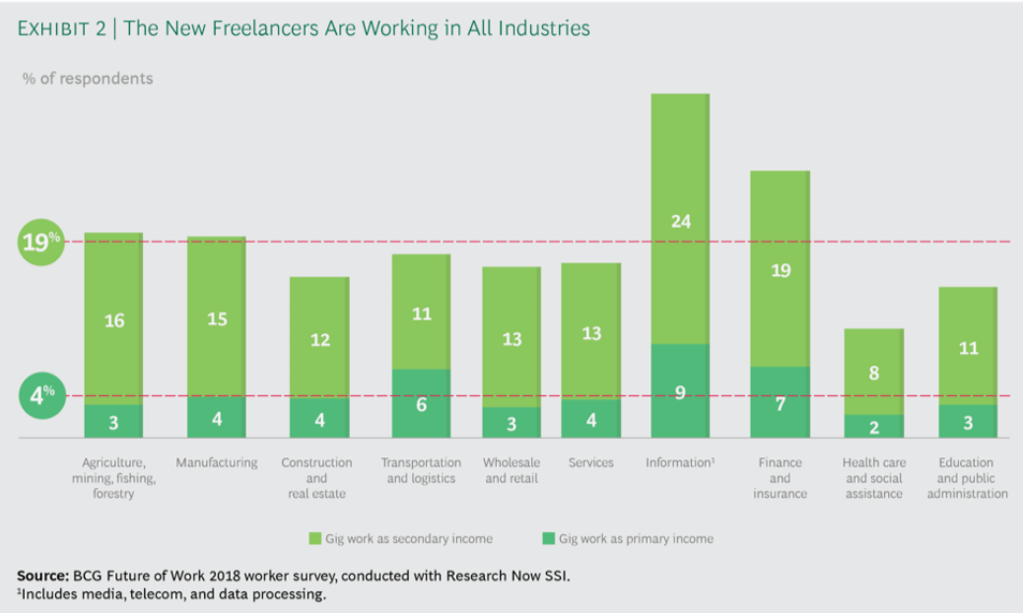Breaking the Mould - Hiring to go the distance
Freelancers might be the saving grace your organisation needs

....continued
Long Term VS Short Term:
Freelancers, and how they might be the saving grace your organisation needs.
In today’s dynamic and ever-changing world, companies need to find just the right the balance between long term and short-term staffing needs. This is a critical component of running a successful and cost-effective firm.
Unless you're a tech giant with coffers of gold, careful management of each position on the payroll is critical to thrive as bottom lines rise and profit margins decrease for all but the largest enterprises.
The right mix of full-time and freelance workers may help you meet all of your staffing demands while keeping prices down.
These two categories are important for HR professionals to explore.
- There's the classic pond, where traditional occupations are becoming increasingly difficult to find.
- Then there's the pond of freelancers, which is quickly expanding. New technologies are driving the hiring of this freelancing pond, which means the procedure is incredibly flexible, quick, and transparent. Smart businesses are getting a competitive edge by understanding the change.
Early mover advantage
More and more people are being drawn like moths to a flame to the freelancing economy with 93% of full-time freelancers concurring that, “If I ever need to, I can work more to earn more money.” This logic appeals to non-freelancers as well, with 76 percent saying they would consider freelancing during a recession.
Contrary to popular belief, hiring doesn't work just one way. The best companies know this and use it to their advantage.

These businesses are generally the ones who benefit from rapid expansion. Some companies have a lot of potential, but they won't be able to realize it unless they hire more people, which is where freelancers come in. What many miss, is the opportunity to then have the option to extend the contracts based on the company's development. Essentially turning this entire pool of freelancers (people confident enough in their skills to venture out on their own) as a potential job market created just for you.
What about long term?
Some longer term, permanent jobs will always require a full-time employee. These need a variety of benefits to attract the most apt candidates that certainly cost more. If there happens to be an opening for a long-term position, recruiters need to first evaluate if a full-time employee is the best option, or if a short-term employee would suffice.
Long term rewards must be contrasted with short term gains. Getting the job done today, pitted against advancements towards company goals, i.e., the future.
With how quickly the current workspace changes and is affected by advancements in technology, a once critical role may have now become redundant and new roles, requiring a unique skillset may present themselves upon review.
Traditional recruiting today, still drives the employer-employee pairing and it results in many individuals working on finding, interviewing, and determining who has the proper abilities for each position. These procedures are becoming redundant and inefficient with technology progressing to the point where it can now handle all the heavy lifting. Staffing decisions now need to be regarded as a chance to break the glass ceiling and improve on the status quo rather than a necessary evil. The quality of hire needs to be constantly evaluated and improved upon.
This is an example of how many roles in companies, be it SMEs or MNCs can overlap when it comes to hiring;
(This still is not a definitive representation of which roles fall under long/short term hiring. It all depends on individual entity’s needs)
Long Term |
Short Term |
CEO/COO/CFO/Founding Members |
|
Heads of Department |
|
Core Product Developers |
Experimental/Non-core Developers |
Internal Auditors |
External Auditors |
Managers |
Strategy Consultant |
Corporate Secretary |
Company Secretary |
Brand Marketing |
Ad-hoc Content Creators |
So how does one go about deciding which category fits best for their needs?
Simple. You start by weighing out how badly your company needs a certain role. Let's take developers for example. We first begin with why your company needs this developer.
If you’re looking for someone who will stick with you from the beginning until the foreseeable future, someone who will learn and understand the needs of the company, you’re in the market for a long term hire (Core product developer).
If you’re looking for someone who is only needed due to an increase in workload or someone for a specific project alone, you’re in the market for a short term hire (Experimental feature/Non-core developer).
A few good freelance portals maintain high quality freelancers through very selective acceptances, one such place is Workana.
For each individual role there are a number of factors to consider before deciding on the length of employment. Once that is done, however, the question then is should you hire someone new or within the company? The debate between internal and external hiring is just as important as deciding between long term and short term hiring.
Stay tuned for the next post where we will be discussing just this!

Vita's been working with freelance agencies to help them create and track objective traits people look for in freelancers. Whether it's verifying and having levels of attainment in skills endorsed by clients, or more qualitative measures, attitude, ability to work with ambiguity, communicative abilities, timeliness, we surface these attributes. Want to learn more? Get in touch!
